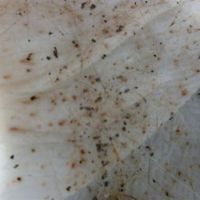Can Fleas Live On Clothes
Can Fleas Live On Clothes. Fleas, those tiny and pesky insects that thrive on the blood of animals, are well-known for their ability to infest our pets and homes. However, one common question that often arises is whether these relentless parasites can also take refuge in our clothing. The answer is not a straightforward yes or no, as fleas can occasionally end up on our clothes, but their ability to survive there is limited and depends on various factors.
The presence of fleas on clothing typically occurs when they jump onto a person or pet and become attached to the fabric. While fleas may hitch a ride on your attire, they do not necessarily establish a long-term residence there like they would in carpets, bedding, or on their host animal. To understand the extent to which fleas can live on clothes, it’s essential to explore the conditions and limitations surrounding this phenomenon.
Related: Get Rid Of Fleas Without Bombing
Can Fleas Live On Clothes

Fleas can briefly cling to clothing when they encounter a human or pet, but their survival on fabric is limited, as they primarily depend on living hosts for sustenance.
Understanding these limitations is crucial for effectively managing flea infestations in your home.
Can Fleas Bite Through Clothing?
Fleas are relentless bloodsuckers, and their ability to bite through clothing depends on several factors. While clothing does provide a certain degree of protection, it is not an impenetrable barrier for fleas. Here are some key points to consider:
- Clothing as a Barrier: Fleas have specialized mouthparts designed to pierce the skin and access blood vessels. While clothing can obstruct their path to some extent, it’s not an absolute deterrent. Thinner fabrics offer less protection, and fleas may be able to bite through them more easily than thicker materials.
- Areas of Vulnerability: Fleas are adept at finding areas where clothing fits loosely or where skin is exposed. They are more likely to succeed in biting through clothing in such areas, such as around the ankles, wrists, or neck.
- Personal Sensitivity: Individual sensitivity to flea bites varies. Some people may not even notice when fleas manage to bite through their clothing, while others might experience discomfort or itching.
How Long Can Fleas Live Indoors?
The lifespan of fleas indoors can vary based on multiple factors, including environmental conditions and the presence of suitable hosts. Here are some key points to consider:
- Ideal Conditions: Fleas thrive in warm and humid environments. Under optimal conditions, with a consistent supply of blood from a host, fleas can live indoors for several months. This allows them to complete their life cycle, which includes the egg, larva, pupa, and adult stages.
- Host Availability: The presence of pets or even humans plays a crucial role in determining the longevity of indoor flea populations. Without access to a host, fleas cannot reproduce, and their numbers will gradually decline.
- Environmental Control: Regular cleaning, vacuuming, and treating pet bedding and carpets are essential steps to limit flea infestations indoors. These actions disrupt the flea life cycle by removing eggs, larvae, and pupae, helping to reduce their overall presence.
How Can I Keep Fleas Off Me?

Preventing flea bites is crucial for both comfort and health. To keep fleas at bay, consider the following strategies:
- Pet Protection: Ensure your pets are regularly treated with flea preventatives recommended by a veterinarian. This not only protects them but also reduces the risk of fleas infesting your home.
- Personal Protection: When in flea-prone areas or environments, wear long-sleeved clothing and pants, preferably in lighter colors, to make it easier to spot any fleas that might be on you. Tuck pants into socks or boots to reduce access points for fleas.
- Insect Repellents: Use insect repellents containing DEET or picaridin on exposed skin. These repellents can deter fleas from landing on you.
- Regular Inspections: After spending time in areas where fleas may be present, inspect your clothing and skin for any signs of fleas. Prompt removal and treatment can help prevent infestations.
How do I know it’s a fleabite?
Fleabites are often characterized by certain distinctive features:
- Multiple Bites: Fleas usually leave multiple small, red, itchy bumps in clusters or in a linear pattern, as they tend to bite repeatedly in the same area.
- Red Centers: Fleabites may have a reddish center surrounded by a slightly raised, reddened area.
- Itching: Fleabites are typically very itchy, and the itching can be intense, leading to discomfort and potential skin irritation.
- Locations: Fleabites are commonly found on areas of the body that are exposed, such as the ankles, lower legs, and feet, but they can occur anywhere on the body, especially if you’ve been in contact with infested bedding or furniture.
If you suspect you have fleabites, it’s essential to confirm the presence of fleas in your environment and take steps to address the infestation.
How Long Do Fleas Live?
The lifespan of a flea depends on various factors, but in general, fleas go through four stages: egg, larva, pupa, and adult. Here’s a breakdown of their life cycle:
- Eggs: Flea eggs can hatch in as little as 2 days or take up to two weeks, depending on environmental conditions like temperature and humidity.
- Larvae: Flea larvae can last for a few days to several weeks, depending on environmental factors and the availability of food (organic debris and flea feces).
- Pupae: Pupae can remain dormant for several days to several months, waiting for suitable conditions to emerge as adults.
- Adults: Adult fleas typically live for 2 to 3 months but can survive much longer under optimal conditions.
It’s important to note that the total life cycle of fleas can range from a few weeks to several months, and successful flea control involves targeting all stages of their life cycle.
Can Fleas Travel On Humans To Another House?
Yes, fleas can hitch a ride on humans and be transported to another house. Fleas are highly mobile and can easily jump from one host to another. If you’ve been in an environment infested with fleas, it’s possible for them to cling to your clothing or personal belongings. Once you enter another house, these fleas can potentially infest the new location, leading to a new infestation.
To prevent this, it’s a good practice to change and wash your clothes after visiting a location with a known flea problem. Additionally, inspect your belongings for any fleas or flea dirt before entering your home to minimize the risk of bringing them with you.
How to Get Rid of Fleas
Getting rid of fleas can be a multi-step process, and it often involves treating both your pets and your home:
- Treat Your Pets: Use flea control products recommended by your veterinarian to treat your pets. These can include flea collars, topical treatments, or oral medications. Regular grooming and bathing can also help.
- Clean Your Home: Vacuum your home thoroughly, paying special attention to areas where your pets spend time. Wash your pet’s bedding and any other fabric that may harbor fleas. Dispose of the vacuum bag or clean the canister to prevent fleas from escaping.
- Use Flea Treatments: Consider using insect growth regulators (IGRs) or insecticides specifically designed for fleas in your home. Follow the instructions carefully.
- Treat the Yard: If your pets spend time outdoors, treat your yard to control fleas in the environment. Consult with a pest control professional if necessary.
- Prevent Reinfestation: Implement preventive measures, such as regular cleaning and maintenance, to prevent fleas from returning.
It’s often a good idea to consult with a pest control professional to address severe infestations effectively and to choose the most suitable treatment options for your specific situation.
Bottom Line
Fleas can indeed bite through clothing, though the degree of protection provided by different fabrics varies. Their ability to survive indoors depends on environmental factors, host availability, and effective pest control measures. To keep fleas off you and prevent infestations in your home, a combination of pet protection, personal prevention strategies, and vigilant inspection is essential. Understanding these aspects of flea behavior and management can help you maintain a flea-free and comfortable living environment for both you and your pets.


